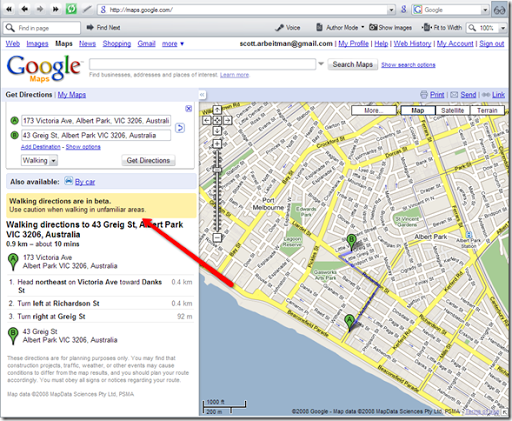I just received my marks for both my syndicate paper and presentation for the "Managing People for High Performance" class at Melbourne Business School. Both of these marks were based partially on peer feedback, and in slightly different ways. [The peer feedback for the paper hasn't yet been received, so I'll talk about the presentation and update this posting later.]
The presentation, worth only a small amount of my total grade, was given to the entire class and the mark was based 50% on feedback from my classmates and 50% from the lecturer. Our final mark was 7.4 (out of 10): 7.2 from the professor and 7.6 from the rest of the class. Included in the document containing these marks were four pages of quantitative feedback from my peers, not all of it positive.
I'm still reflecting on these comments, and while many were positive, there was a general consensus that I relied too heavily on reading the slides (which were behind be, being projected) instead of making eye contact with audience. This is certainly good and constructive feedback; I will definitely watch out for this next time (note: I had forgotten my notes on my desk when I went to up to present, so I'll be sure not to do that in the future). There was one comment in the listing that struck me as both offensive and complementary. It said:
First speaker (Scott) was very distracting. Spoke very quickly and did not make eye contact with the audience as they had their back turned reading the slides. Second speaker articulated the information clearly and engaged the audience.
I find the use of the term "distracting" particularly puzzling, and I'm left wondering if the first sentence relates to the second, or is something reflecting an aversion to my general speaking style and personality? However, I think most speakers would like to described as distracting when the presenting; what exactly was that person distracted from? The focus of this person's attention should have been on me, and I certainly won't apologize if something I did was a distraction from, say, Facebook (a favourite of students during a boring presentation).
[As you can probably tell, I did get a bit defensive at this point, but I will definitely take this criticism on board for next time.]
As a member of the class, I too was required to provide feedback on the presentations as well. I have to say that despite my defensive tirade above, I was even more harsh on my fellow classmates, perhaps having higher expectations or because I was simply grumpy. I'm concerned that my low scores will start to affect other presentation scores. I hope that the professor scales people's scoring, because everyone will have a different baseline of how to score. For example, I often gave a 4 for a very slightly below average performance, my hope is that they would receive a 70 - 75 for their presentation, based on my expectation that the average mark would be 75 - 80. Certainly, I did not want or even believe that they should fail!
I have to say that receiving feedback from classmates was extremely helpful, and it is very hard to be in denial about relying on the slides when dozens of fellow classmates -- bright, friendly, and intelligent people -- all say the same thing.
I'll leave you with one of my favourite videos on the subject (we made some of the same mistakes):

